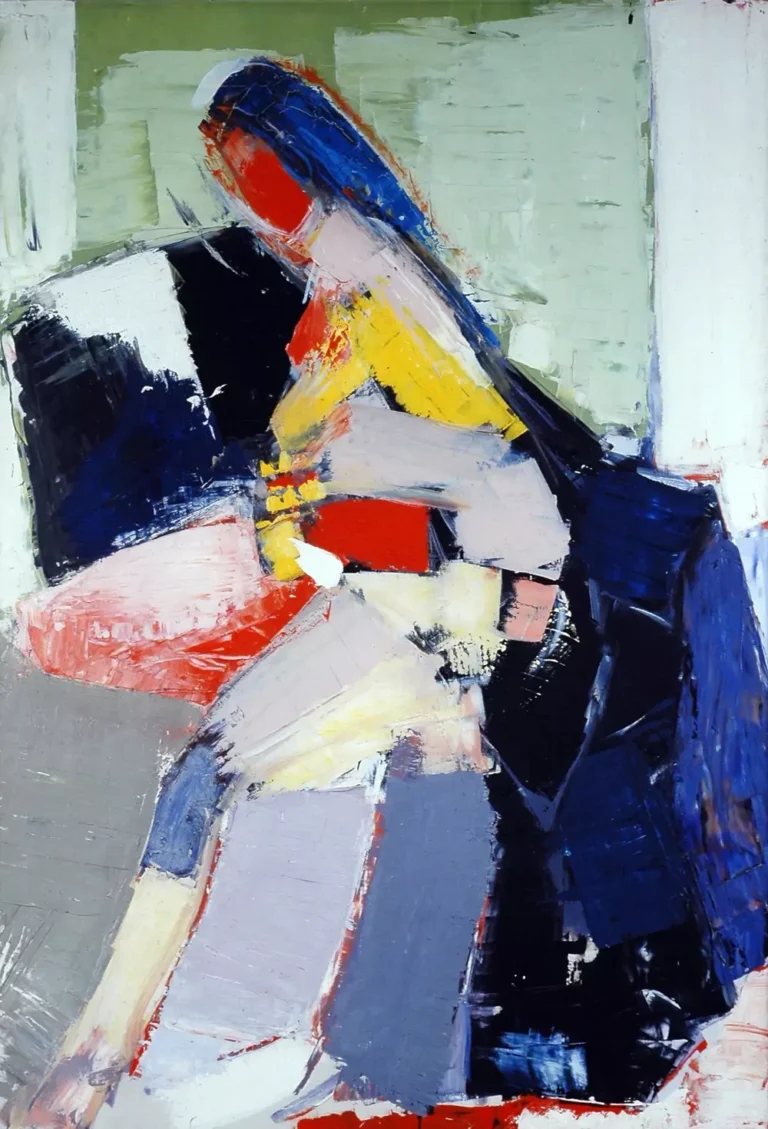Looking for a muse? Check no further. Discover the Best of Art, Culture, History & Beyond!

Joan Miró’s The Gold of the Azure (1967)
When you first encounter Joan Miró’s The Gold of the Azure, you’re immediately drawn into a world where colors and forms playfully intertwine, creating a visual symphony that’s both captivating and enigmatic. Painted in 1967, this masterpiece stands as a testament to Miró’s innovative spirit and his profound connection to the natural world.
A Glimpse into Miró’s World
To truly appreciate The Gold of the Azure, it’s essential to understand the man behind the canvas. Joan Miró, born in Barcelona in 1893, was a pioneering figure in the world of abstract and surrealist art. His works often blur the lines between reality and imagination, drawing inspiration from his Catalan roots, nature, and the subconscious mind.
Miró once said, “I try to apply colors like words that shape poems, like notes that shape music.” This philosophy is vividly evident in The Gold of the Azure, where each hue and form contributes to a harmonious composition that resonates deeply with viewers.
The Canvas Unveiled
At first glance, The Gold of the Azure presents a vibrant interplay of colors and shapes. The canvas measures 205 by 173.5 centimeters, offering a generous space for Miró’s creative expression. The background is a luminous yellow, reminiscent of golden sunlight, which serves as a stage for the dynamic elements that dance across the surface.
Dominating the composition is a rich blue form, evoking the vastness of the sky or the depths of the ocean. This azure expanse is punctuated by intricate black lines and shapes, creating a sense of movement and spontaneity. The contrast between the warm gold and cool blue establishes a visual tension, inviting you to explore the depths of the painting.
Delving Deeper: Symbolism and Interpretation
Miró’s art is renowned for its symbolic richness, and The Gold of the Azure is no exception. The title itself suggests a fusion of elements—gold representing the earth and azure symbolizing the sky. This union can be interpreted as a reflection of the artist’s desire to bridge the tangible and the ethereal, grounding the infinite expanse of the sky with the solidity of the earth.
The black lines and shapes scattered across the canvas may represent celestial bodies, constellations, or abstract figures. Their playful arrangement encourages you to engage with the painting actively, allowing your imagination to decipher the forms and their meanings.
A Nod to Asian Art
Art critics have often noted the poetic quality of The Gold of the Azure, drawing parallels to Asian art. The minimalist composition, combined with the delicate balance of elements, mirrors the aesthetics found in traditional Asian paintings. The fine lines and sparse distribution of forms allow the canvas to “breathe,” creating a sense of tranquility and contemplation.
The Technique Behind the Magic
Miró’s mastery of technique is evident in this work. Utilizing acrylic on canvas, he achieves a texture that’s both vibrant and subtle. The application of color is meticulous, with the yellow background featuring slight variations in tone, adding depth and dimension. The blue form, rich and velvety, contrasts sharply with the crisp black lines, showcasing Miró’s skill in balancing different textures and shades.
The Legacy of The Gold of the Azure
Today, The Gold of the Azure resides in the Fundació Joan Miró in Barcelona, a museum dedicated to the artist’s life and works. This piece, gifted by Miró to the Barcelona City Council, stands as a testament to his enduring legacy and his deep connection to his homeland.
Visitors to the museum often find themselves mesmerized by the painting’s vibrant energy and the emotions it evokes. It’s a piece that transcends time, inviting each generation to experience its magic anew.
Engaging with The Gold of the Azure is akin to embarking on a journey through Miró’s imaginative universe. The painting challenges you to look beyond the surface, to explore the interplay of colors and forms, and to find personal meaning within its abstract beauty.
As you stand before this masterpiece, allow yourself to be enveloped by its warmth and mystery. Let the gold and azure hues transport you to a realm where art and nature converge, and where the boundaries between reality and imagination blur into a harmonious dance.

This article is published on ArtAddict Galleria, where we explore the intersections of art, history, and culture. Stay tuned for more insights and discoveries!



